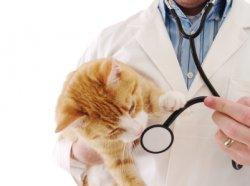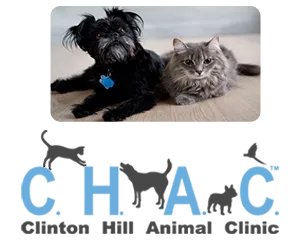 me feel right at home. I'm a native of Washington, DC, but have been living in Scotland for the last four years, and moved to New York this summer. So, if you've got any good restaurant or activity recommendations, please let me know!
me feel right at home. I'm a native of Washington, DC, but have been living in Scotland for the last four years, and moved to New York this summer. So, if you've got any good restaurant or activity recommendations, please let me know!
This September, our focus is on Lyme Disease, a tick-borne disease that is prevalent here in New York. For more information on the disease, and what we're doing to help prevent it in our patients (as well as some great discounts), or if you are a subscriber to our Newsletters, watch for the September issue.
I've noticed a trend among our clients to look for the best food for their pets, so I thought I'd take this opportunity to bring up the topic of pet foods and shed a little more light on the various types of diets. There are a lot of different opinions, even within the veterinary community, about what food is best for our pets. Today I'm going to try to shed a little more light on what most veterinary professionals do agree on, and give you some tools to help you select the best diet for your pet. If any of this raises questions for you, please don't hesitate to email me and ask. I'll answer any questions I receive in next week's blog.
Cats are evolutionarily very close to lions, tigers, and the rest of their larger relatives. Nutritionally, this makes them carnivores. If left to their own devices, cats would hunt throughout the day, and eat approximately 10 mice, or other small prey, a day. We've learned a lot about the more specific nutritional requirements of cats through trial-and-error over the years-there are some nutrients which cats require a lot of, and some which can seriously harm them if given in too high a quantity.
Dogs have digestive systems much closer to our own than their wolf ancestors, and have evolved as omnivores. They are able to digest vegetable matter and carbohydrates, as well as meat. They differ from us in some of their 'micronutrient' (vitamin and mineral) requirements, and some breeds have even more specific requirements. For example, working huskies have an extremely high requirement for vitamin C. Nutrition requirements also differ between different sized dogs, especially while they are still growing. Giant and large breeds need carefully controlled caloric intake, as well as carbohydrate and calcium levels, to ensure healthy bone and joint development.
Choosing the right food for your pet can be a confusing task. There are so many options, both commercial and homemade. For this blog, I'm going to stick to discussing commercial diet options, but if you are interested in homemade and alternative options, check back over the next couple weeks. Today, I want to give you the information to critically evaluate the pet food you are buying. There are strict legal definitions for many of the terms used on pet food labels, and knowing what they mean (and which terms don't have a formal definition) will help you understand what you are buying. If you find any terms or phrases on your pet food that you don't know the meaning of, send me an email with them and I'll find out what they do or don't mean and post it in upcoming posts.
Nutritional Adequacy Statement:
• Foods must have an official statement regarding their intended use; this is probably the single most important part of a pet food label, and is my go-to for a quick assessment of any pet food.
• Complete Diet: Any food used in the long-term (with the exception of some prescription diets for medical conditions) should have one of the following statements, indicating that it is safe to feed as the primary nutrient source:
o "… formulated to meet the nutritional levels established by the AAFCO Dog [or Cat] Food Nutrient Profiles"
o "Animal feeding tests using AAFCO procedures substantiate that … provides complete and balanced nutrition"
Intended Lifestage:
• 'For maintenance': This food may safely be fed to adult animals
• 'For growth': This food may safely be fed to juvenile animals
• 'For all life stages': This food may safely be fed to any age animal
Note: These are the only three regulated stages; any others have no official definition, although their use may reflect careful tailoring of the nutritional content
Defined Terms:
• Named ingredient: If a food's name includes ingredient(s) of animal origin, then it must be composed of at least 95% those ingredients.
o E.G. 'Chicken Dog Food' must be at least 95% chicken
• Dinner: A food called 'beef dinner', or any other term such as entrée, platter, nuggets, or formula, must contain at least 25% of the ingredient named.
o E. G. 'Fish Entrée for Cats' must be at least 25% fish
• Highlighted ingredients: If a label advertises a food 'with' an ingredient, it must contain at least 3% that ingredient.
o E.G. 'Dog Food with Beef' must be at least 3% beef
• Flavors: Foods advertising themselves as a certain flavor are tested to verify that the flavor is detectable. How the flavor is added and what percentage any ingredients used to add the flavor is not regulated.
Undefined Terms: Pet food labels are regulated differently from human food products, so many of the terms used on our food have no legal definition when applied to pet food.
• Natural: This is often used when a food is free of artificial flavors or preservatives. Note that most foods will require preservatives, and that the large majority use natural sources, but some ingredients (e.g. high-fat dry foods) necessitate artificial preservatives to keep bags of food fresh over the long period they are fed
• Organic: This usually means that some portion of the ingredients are grown or raised according to organic standards, but the food does not need to meet the same stringent guidelines as organic products intended for humans
Thanks for joining us here on the blog! If you have any questions, or want to know more about this topic, please email me and I'll be sure to respond. I'll be putting up more information about other types of diets in the coming weeks, so be sure to check back to learn more about options for feeding your pets.
